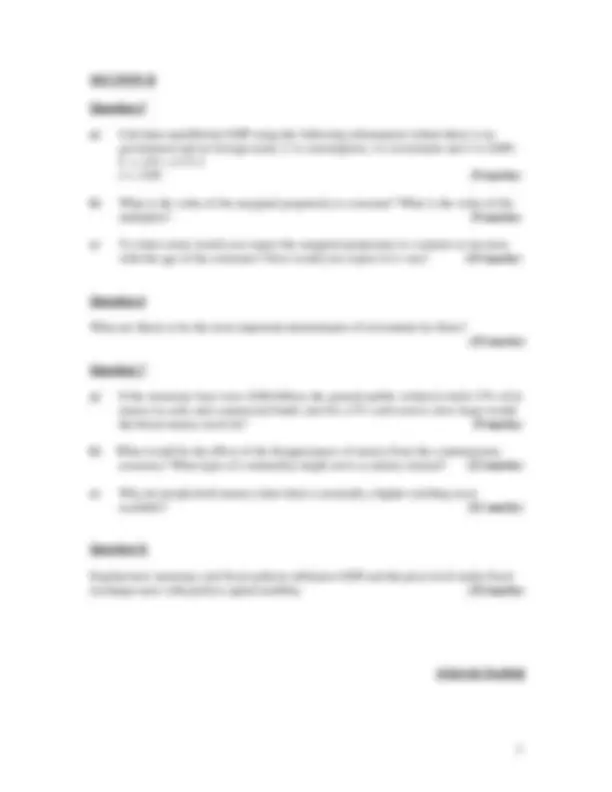



Study with the several resources on Docsity

Earn points by helping other students or get them with a premium plan


Prepare for your exams
Study with the several resources on Docsity

Earn points to download
Earn points by helping other students or get them with a premium plan
Community
Ask the community for help and clear up your study doubts
Discover the best universities in your country according to Docsity users
Free resources
Download our free guides on studying techniques, anxiety management strategies, and thesis advice from Docsity tutors
The questions and instructions for an economics exam held at prifysgol aberystwyth university in may/june 2009. The exam covers topics such as consumer behavior, production costs, monopolies, and macroeconomics. Students are required to answer questions related to indifference curves, marginal costs, demand curves, and equilibrium gdp.
Typology: Exams
1 / 3

This page cannot be seen from the preview
Don't miss anything!


DEGREE EXAMINATIONS – May/June 2009 ARHOLIADAU GRADD – Mai/Mehefin 2009
SEMESTER 2
EC10320 – ECONOMIC PRINCIPLES AND SKILLS 2
Time Allowed: TWO hours
Answer THREE questions, at least ONE from Section A and ONE from Section B
Casio FX83ES and Casio FX85ES calculators only may be used.
Question 1
a) Draw a clearly labelled diagram which shows how a consumer allocates expenditure between two goods, both of which are normal. Explain what is meant by an indifference curve and a budget constraint. (13 marks)
b) In a second diagram, show the effect of a fall in the price of one good while the price of the other remains the same. Distinguish carefully between the income and substitution effects. (10 marks)
c) Use this diagram to derive a demand curve for the individual consumer. (3 marks)
d) The law of demand states that as price rises, the quantity consumers want to buy will decrease. Outline two special cases where this may not apply, providing reasons for each. (7 marks)
Question 2
A Hebridean knitting cooperative has the variable costs for producing hand-made sweaters:
Question continues overleaf TURN OVER
a) If the weekly fixed costs of hiring a village hall to produce sweaters total £100, calculate the total, average and marginal costs of sweater production for this cooperative, and the total profit that is earned. (10 marks)
b) If the price which sweaters can be sold at is £75, how many sweaters a week should the cooperative produce if it aims to earn maximum profits? (6 marks)
c) Draw a diagram to illustrate the relationship between average and marginal costs and average and marginal revenues. (7 marks)
d) Given the level of profits that the cooperative is making at its preferred level of output, explain what you would expect to happen in the market for hand-made sweaters produced in the Hebrides in the long-run. (10 marks)
Question 3
a) Using a diagram, show how a monopolist would set output to maximise profits. (5 marks) b) Identify the level of supernormal profits which it is possible to achieve, and also describe the loss in consumer welfare which would occur as a result. (5 marks)
c) Using an example, explain the prisoner’s dilemma game between two members of a duopoly. Explain the equilibrium outcome in the game. (5 marks)
d) How does this equilibrium output and profit for each firm compare with the levels that would be chosen if i) the market was competitive and ii) the two firms combined to operate as a monopoly? (8 marks)
e) Explain the reasons why a monopoly might arise in a particular market. (5 marks)
f) Why is monopoly power bad for the economy as a whole? (5 marks)
Question 4
a) What is meant by the term "allocative efficiency"? What conditions need to hold in order for an economy to be allocatively efficient? Explain the criterion which can be used to test whether an allocation of resources in the economy is allocatively efficient. (20 marks)
b) Explain why the free market is unlikely to provide an allocatively efficient level of a good for which consumption is non-rival. (13 marks)